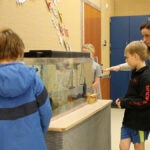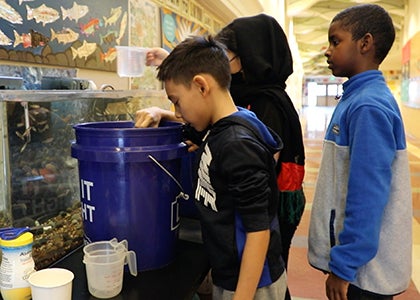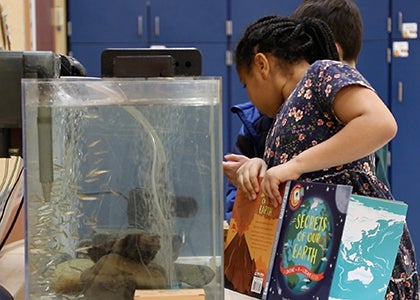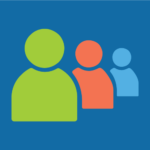Salmon Program Teaches More Than Science
Summary : Teachers, community-based organizations, and watershed advocacy groups are using salmon to raise awareness of how students’ behaviors affect waterways

Objects that start off slightly larger than a pencil eraser are teaching students big things. These objects – salmon eggs – are part of a program called Salmon in the Schools – Seattle (SIS – Seattle).
SIS – Seattle’s roster includes more than 40 Seattle public schools and provides students with hands-on, exploratory learning by teaching them about salmon biology and culture while raising awareness of environmental issues.
Dunlap Elementary Fourth Grade Teacher Wil Depusoy, who has participated in the program for more than a decade, said it teaches students about ecosystems, responsibility, mindfulness, and their community.
“Fish help with social, emotional learning. Parts of mindfulness play into this,” Depusoy said. “Looking at the aquarium or caring for another living thing can help you cope with stresses.”
At Coe Elementary, students have been participating in the program for more than 20 years. Third Grade Teacher Madison Russell got involved after hearing a coworker speak highly of the program’s impact on student learning and its ability to inspire curiosity.
“It brings the entire school together, from kindergarten to fifth grade,” Russell said. “All students are excited to see the arrival of the salmon [eggs] to our school and watch their progress as they develop.”

The Washington Department of Fish and Wildlife established the salmon program in 1991 under another name – Salmon in the Classroom. When funding dried up in 2012, educators, agency staff members, and environmental advocates joined forces to continue the program’s mission.
“Salmon in the Schools is run in partnership with the Fauntleroy Watershed Council, the Carkeek Watershed Community Action Project, and IslandWood with support from the Washington Department of Fish and Wildlife, state hatcheries, the Suquamish tribal hatchery near Kingston, and Seattle Public Schools,” said Katherine Straus, the youth stormwater education program manager at Seattle Public Utilities (SPU).
With permits from the Department of Fish and Wildlife, schools raise chum, coho, or Chinook salmon. Hatcheries provided salmon eggs and schools release the resulting fry into specific local waters.
SPU usually covers some of the costs needed to participate. However, in an effort to increase equity and opportunity for participation, the utility covers the full cost of equipment for schools where 37% or more of the student body qualifies for free or reduced lunch. SPU also helps with the cost of field trips.
Each school’s system of maintaining its salmon tanks varies. At Dunlap Elementary, Depusoy has the tank maintenance for the school’s Chinook (or king) salmon, down to one recess period using a rotating crew of four students. To reduce waste, students use the water they swap out of the tank on the school vegetable garden.
“We’re doing a little bit of aquaculture to help with our horticulture, explaining to the kids that everything the salmon make is very good for plants,” he said. “We really want to try to promote such sustainable choices.”
At Coe Elementary, a pivotal moment in the program is predicting when the salmon will hatch and when they will be big enough to swim freely. Russell uses math and science to help students calculate these predictions.

Another pivotal moment in the program is the release, which usually takes place in April or May at Carkeek Park, sites along Lake Washington, and Fauntleroy Creek in West Seattle. Students look forward to their release field trip.
Chinook salmon raised by Dunlap students are released down the street at Pritchard Beach, a location where kids swim in the summer, Depusoy said.
“Each child gets one salmon fry in a cup to name and release,” he said. Names often reflect a student’s favorite anime character or singer.
Students, teachers, and volunteers do their best to release several thousand fry each year. “We released nearly 10,000 fry in 2022,” Straus said.
Ideally, it would be great if 100 percent of the 150-220 eggs each school receives survived. However, Straus emphasized that this is an education program and not a salmon-rearing program, so some die-offs are inevitable and likely would be greater in nature.
Salmon-related lessons have a lasting effect on students, said several of those who help steer the citywide program.
“The kids pick up a lot and some clearly care,” said David Koon, who is director of salmon programs for the Carkeek Watershed Community Action Plan. “Kids make connections between the forest and water. Older people who visit us remember releasing their fish here 20 to 30 years ago.”
SIS – Seattle leadership member Judy Pickens, who has been a steward of Fauntleroy Creek since the early ’90s, said the program also gets students up close and personal with the natural world in age-appropriate ways that are both fun and informative.
Russell agreed: “The program provides for a clear way to discuss both the environmental and cultural significance of salmon in the Pacific Northwest and gives students a tangible connection to these larger topics.”
Koon said for some underserved communities, their visit to Carkeek Park is their first experience with a fish not in a movie or in a sandwich.
SIS – Seattle welcomes teachers who might want to join the program to learn more about Salmon in the Schools.


